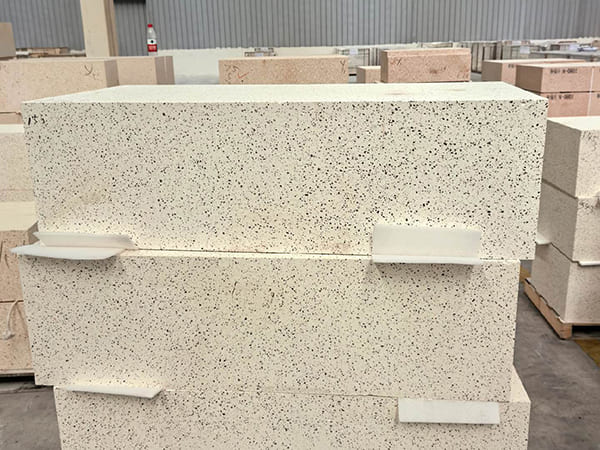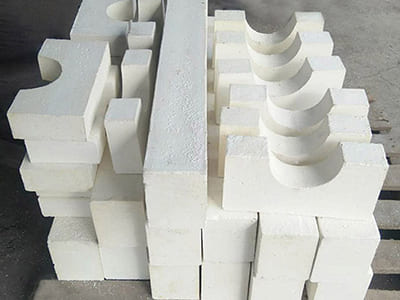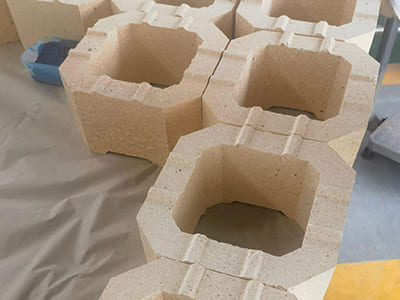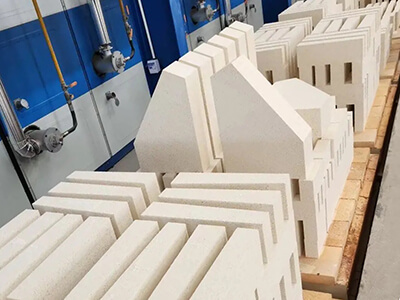
Silimanite brick
Material: Sillimanite, mullite, calcined bauxite, flux-calcined stone Advantages: Low thermal expansion, excellent abrasion and corrosion resistance Category: Alumina-silicate refractories Al₂O₃-SiO₂
Application
Metallurgy, Cement, and Glass Industries; Renewable Energy, Semiconductor, and Aerospace Industries; Waste Incineration Furnace
Description
The manufacturing process utilizes the following raw materials: sillimanite, andalusite, zircon, mullite, alumina powder, and binding clay. Firing is conducted in a tunnel kiln at 1450–1500°C with a holding time of 10–12 hours, followed by natural cooling for 48–52 hours before extraction.
Specifications
| Item | RS-СК-65 | RS-СК-60 | RS-СК-55 |
| Al203% | ≥ 65 | ≥ 55 | ≥ 55 |
| SiO2% | ≤32 | ≤ 37 | ≤ 42 |
| Fe203% | ≤ 0.5 | ≤ 0.8 | ≤1.0 |
| Apparent Porosity % | ≤18 | ≤ 19 | ≤20 |
| Cold Crushing Strength MPa | ≥ 80 | ≥ 80 | ≥75 |
| Refractoriness Under Load 0,2 MPa °C | >1650 | >1600 | >1580 |
| Bulk Density g/cm3 | 2.5 | 2.3 | 2.5 |
Features
1. Готовые изделия обладают:Product Characteristics:
Low thermal expansion coefficient
Superior resistance to metallurgical slags and glass melts
Exceptional wear resistance at elevated temperatures
2. Physicochemical Properties (vs. High-Alumina Bricks):
Refractoriness: 1770–1830°C
Load softening onset temperature: 1500–1650°C
3. High-Temperature Mechanism of Sillimanite
Upon heating, sillimanite decomposes into mullite (3Al₂O₃·2SiO₂) and silica (SiO₂). The resulting volumetric expansion effectively counteracts product shrinkage caused by increased liquid-phase formation at high temperatures. This controlled expansion:
✓ Compensates for firing shrinkage
✓ Reduces localized stresses
✓ Prevents crack formation
✓ Enhances thermal shock resistance
✓ Minimizes mechanical spalling
Significantly extends overall service life
Applications
✓ Crown of glass melting furnace
✓ Roof of electric furnace
✓ Thermal insulation for feeder channel cover
✓ Burner block assembly
✓ Regenerator checkerwork
✓ Arch masonry construction, etc.
 Custom Refractory Shapes for Glass Melting Furnaces
Custom Refractory Shapes for Glass Melting Furnaces Regenerator Checker Brick for Glass Melting Furnaces
Regenerator Checker Brick for Glass Melting Furnaces Refractory Products for Glass Melting Furnaces
Refractory Products for Glass Melting Furnaces